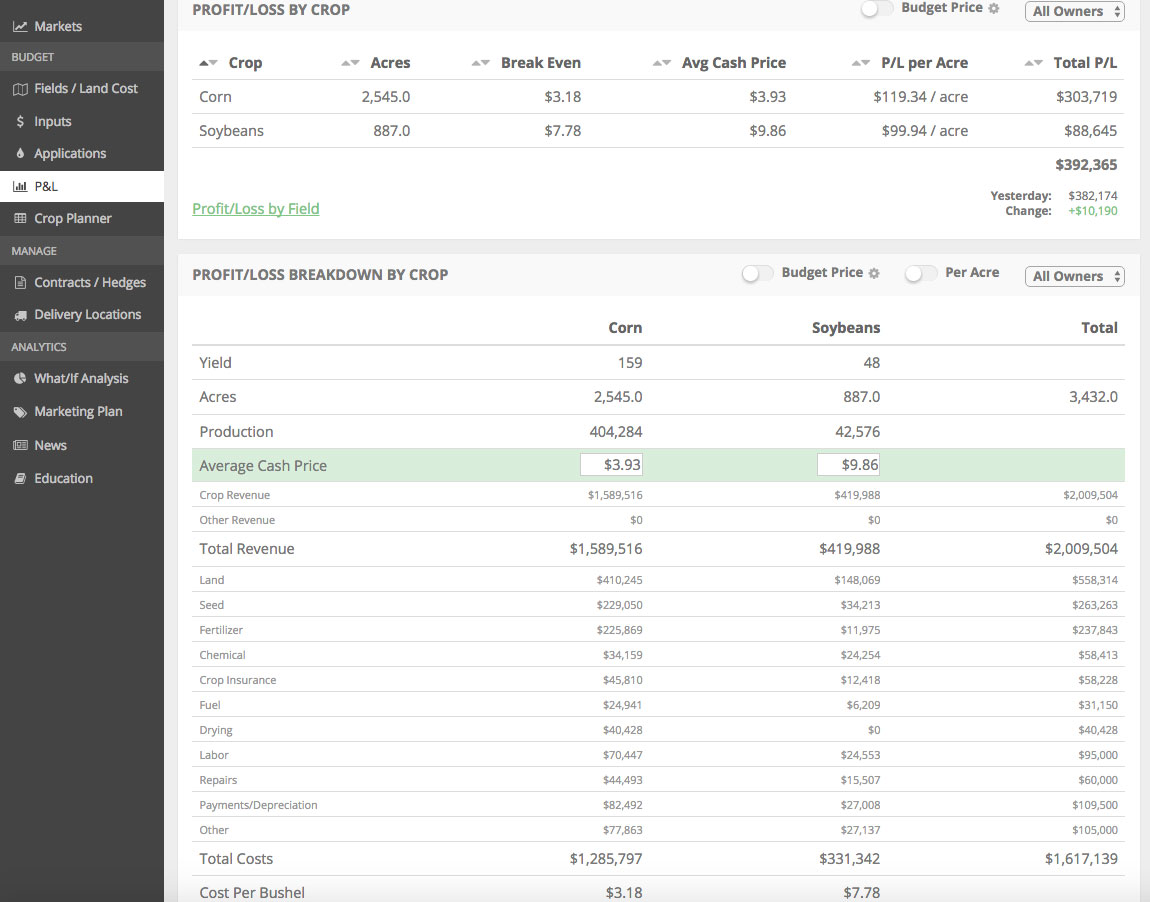Let me tell you a little story from late July 2012.
A farmer I have a long-term relationship with was shell-shocked by the combination of the dry/hot weather and the dramatic rally underway. He had forward contracted 30 bu/acre of corn but was hesitant to do anymore (APH = 150ish) at an average cash price of $5.25.
Corn had just reached $7.50 futures. He called me and mentioned that he wasn’t going to contract anymore corn. “I just don’t know what kind of crop is out there!”
I offered to go out and scout his worst corn field.
I pulled two three-ear samples from 12 different spots in the field. 72 ears in total.
Stands were good and the corn had pollinated OK but it was severely tipping back.
My final estimate was 108 bu/acre on that field.
That field ending up running 151 bu/acre. The difference between the yield estimate and the actual can be explained by this:
- The field ended up catching a couple nice season ending rains and had outstanding kernal size
- Estimating yields is very very hard!
Many crop tours take one sample per field. 3 ears out of millions!
Furthermore, these single samples get spread around social media like wildfire.
“Did you see that sample in W MN? Wow, they have a monster crop coming!!”
3 ears out of trillions….Come on!
We as humans aren’t comfortable with uncertainty, myself included. We are all looking for data that confirms our biases or tells us what to do. In my opinion, these crop tours are simply noise rather than a value-adding data point.
We need to do a better job of ignoring that noise and focus on what’s worked in the past.
- Producing the most cost-effective crop possible
- Take advantage of market seasonality (historically, price premium is added to the crop during the growing season)
- Understand that by the time the unknowns are known, any marketing opportunity is likely in the rearview mirror
- Market your grain like an elevator. Manage your futures price risk with the factors above and maximize your cash price via carry/basis opportunities
Click here to read a blog post that discusses the difficulty involved with yield (and price) predictions.
 Predicting yield at this crop stage is even hard.
Predicting yield at this crop stage is even hard.
This year (2017), in particular, has been an especially difficult marketing year. We’ve seen historically tight ranges in row crops and a vertical short-lived rally in wheat. It is what it is unfortunately.
The next time you hear one of the many yield guesses that get thrown out, take it with a grain of salt. These guesses will add no value to your operation.
Most of them look at the latest USDA projection and anchor their guess to that (whether they realize it or not). If the USDA misses, the “privates” will likely miss. If the USDA is close in their August report, the privates will likely be fairly close as well.
This year for example, the Farm Journal crop tour found what looked like are materially low pod counts on soybeans. But their yield guess came within .9 bushels of the USDA’s August estimate.
There is very little incentive for them to post a yield much different from the USDA. If they are wrong, it will be thrown in their face. If they are wrong AND the USDA is wrong, it’s forgotten.
That’s why these crop tours are simply noise.
I do want to add that I enjoy following the crop tour. Chip and his team do a great job of focusing attention on farming. And it sure looks like a great time to see the countryside and enjoy some fun social activities (I don’t envy the early mornings after said social activities!). There’s definitely value in networking amongst farmers and industry peers!
Also, I won’t get into much detail here but local crop tours can offer more value than nationwide tours/estimates. Obviously, anything that gets closer to statistically-sound sampling (eg. more samples) vs. random one-sample estimates will have value.
I simply don’t think that basing decisions on national yield estimates will add value to your farm.
Once again, understand that by the time the unknowns are known any marketing opportunity will likely in the rearview mirror.

Nick Horob
Passionate about farm finances, software, and assets that produce cash flow (oil wells/farmland/rentals). U of MN grad.
Related Posts
Grain Marketing can be an Emotional Roller Coaster
Grain marketing is hard! Volatile commodity markets lead to frustration, greed, and indecision. Today's farmer needs to work hard to find a risk management system that allows them to make less emotional, and more profitable, grain marketing decisions.
Read More »Grain Marketing: Predicting the Future is Damn Hard
In this blog post, we discuss how it's very hard to make price and yield-oriented predictions. Most predictions are simply noise and need to be filtered out. Farmers need to find a system that will help them focus on what matters, their bottom line.
Read More »
